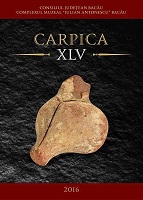Semnificaţia istorică a unor localităţi cu mari proprietari şi edificiile acestora din comuna Săuceşti, judeţul Bacău
Historic Significance of some localities with proeminent land-owners and their edifices in Săucești commune, Bacău district
Author(s): Ioan UngureanuSubject(s): Archaeology, Social history, Modern Age, 15th Century
Published by: Complexul Muzeal “Iulian Antonescu” Bacău
Keywords: Săucești commune; Ioniță Sandu Sturdza; Moldova Iurașcu family; Exarcu;
Summary/Abstract: Historically speaking, Săucești commune enjoys a privileged status among the other territorial-administrative units of Bacău district, not only because some of its component villages have been documented startig with the first alf of the 15th century, but mainly because it was here that the first national ruler of Moldova after 111 years of Fanariot rulings, Ioniță Sandu Sturdza, had its manor and estate; he rules between 1822-1828 when he was dethroned by the Russian occupation. Villages such as Cățelești, Săucești and Șerbești have been documentary certified for the first time between 1460 and 1461 and Peletucii in the last quarter of the 15th century, Schineni in 1651. Large estate owners such as Iurașcu in Peletuci, Ioniță Sandu Sturdza in Săucești, Istrate, Exarhu (origninally from Epira-Greece) in Schineni have laid their mark through sumptuous ecclesiastic edifices, being the grounders of the churches in Săucești ( Ioniță Sandu Surdza and his son Costache), Șerbești (brothers Ioniță and Iordache Istrate), Schineni (Hristudor Exarhu), Peletuci (Ioan Iurașcu), Cățelești (Ioan Greceanu).
Journal: Carpica
- Issue Year: 2016
- Issue No: XLV
- Page Range: 95-118
- Page Count: 24
- Language: Romanian

